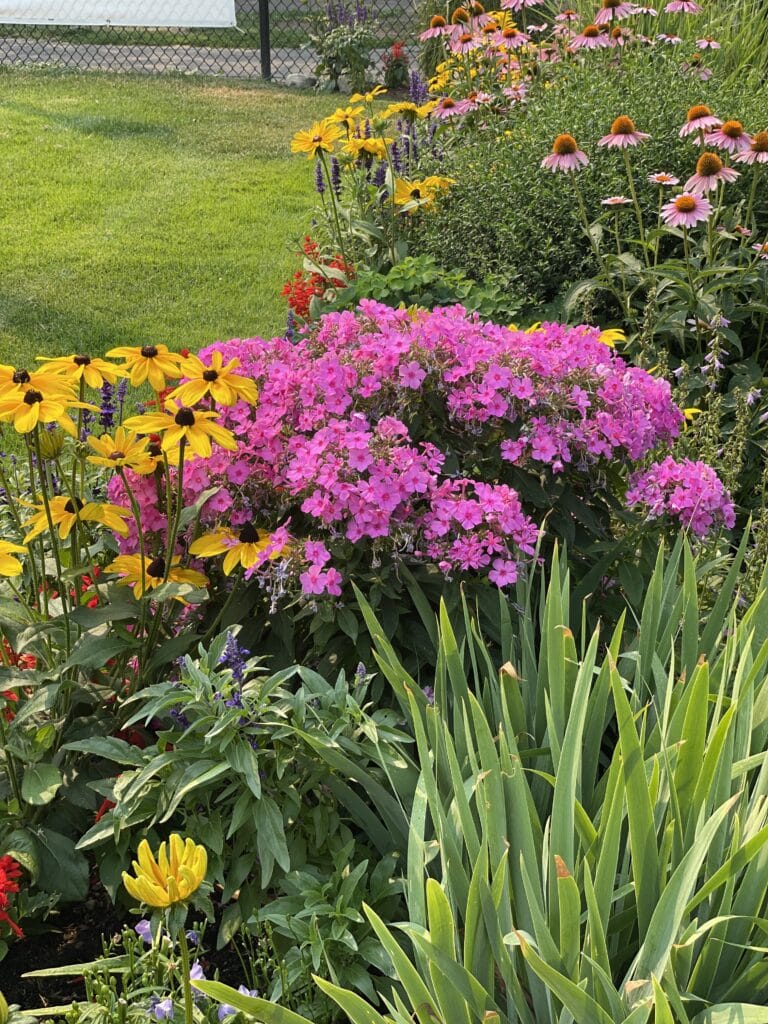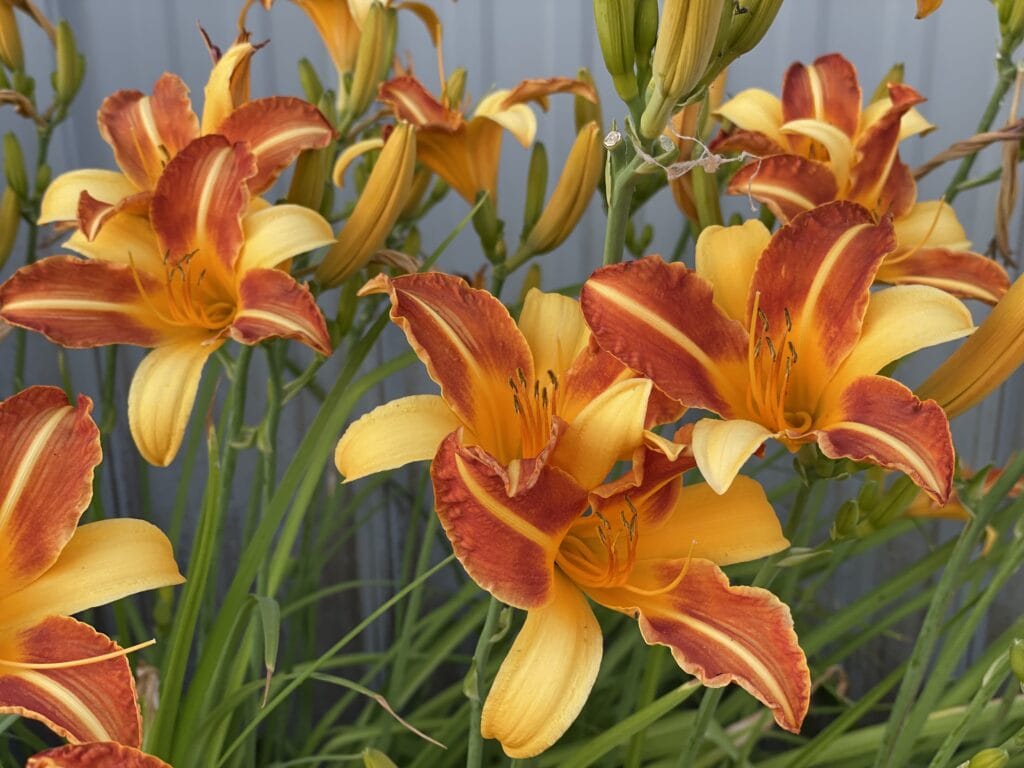-
HomeGarden BasicsBasic Garden Designs Getting Started with Perennials and Annuals

Getting Started with Perennials and Annuals
Blue Grass Garden Blog, July 2023
Continuing our series of what we can grow and what we should plant in Zone 3/4, we turn our attention to the colour and personality of the garden. Perennials and annuals are herbaceous plants that are the filler to the structure created by woody ornamentals. Perennials are plants that return every year as their growth allows, annuals grow just through the current growing season (they will not overwinter). Both provide a cornucopia of colour, texture, and size.
Annuals are the crayons for your garden, they create the summer long colour that we all enjoy. There are so many annual options that any previous plan can be easy disregarded with a simple walk through a greenhouse. Colour, size, and texture are abundant. Remember to keep note of the sun and shade areas in your garden, this is very important factor when choosing annuals and perennials.

Planning for Perennials
Adding perennials to your garden should start with a bit of a plan. Knowing your growing conditions in your yard (how much sun or shade), moisture levels, maintenance requirements and space is important. As always, we encourage choosing the right plant for the right place for growing success. Perennials in general have a specific growing period. Planning for spring, mid-summer and late summer bloom times will keep you in variable colour all summer long. Heights also vary, from ground hugging groundcovers to stately tall choices and everything in between. Plant low growing perennials in front border or foreground, mid-story plants in middle and tall in the background. With so many hardy perennials available to us, it may be tough to know how to get started.
See our quick picks below for a short list to get you growing! Note, this is just a very short list, check in with our greenhouse staff for many more options!
Easy Perennials to Get you Started:
Easy Perennials Big Impact
- Dianthus (pinks)
- Geranium (cranesbill)
- Hemerocallis (daylily)
- Lilium (Asiatic lily)
- Paeonia (garden peony)
- Salvia (perennial salvia)
Easy Full Sun Perennials
- Gaillardia (blanket flower)
- Iris (bearded iris)
- Nepeta (catmint)
- Phlox paniculata (garden phlox)
- Sedum (stonecrop)
- Veronica (speedwell)
Easy Shade Perennials
- Ajuga (bugleweed)
- Aquilegia (columbine)
- Dicentra (bleeding heart)
- Heuchera (coral bells)
- Hosta (plantain lily)
- Matteuccia (ostrich fern)
Garden Planning for Full Garden Borders:
Front of Border Perennials
- Alchemilla (lady’s mantle)
- Dianthus (pinks)
- Phlox (creeping phlox)
- Sedum (low growing)
- Stachys (lamb’s ear)
- Thymus (creeping thyme)
Mid-Bed Perennials
- Aster
- Echinacea (purple coneflower)
- Leucanthemum (shasta daisy)
- Monarda (bee balm)
- Phlox (garden phlox)
- Salvia (perennial salvia)
Back of Border Perennials
- Alcea (hollyhocks)
- Delphinium
- Heliopsis (false sunflower)
- Eupatorium (joe pye weed)
- Filipendula (queen of the meadow)
- Perovskia (Russian sage)
Seasonal Hits to Keep You Blooming Through the Growing Season:
Early Season Perennials
- Arabis (rock cress)
- Aurinia (perennial alyssum)
- Bergenia (pigsqueak)
- Euphorbia (cushion spurge)
- Primula (primrose)
- Violas
Mid Season Perennials
- Delphinium
- Lilium (Asiatic & Martagon Lily)
- Nepeta (catmint)
- Paeonia (peony)
- Phlox (garden phlox)
- Salvia (perennial salvia)
Late Season Perennials
- Aster
- Echinacea (coneflower)
- Liatris (blazing star)
- Perovskia (Russian sage)
- Rudbeckia (black eyed Susan)
- Sedum (stonecrop)
Perennials for a Reason
We could also get into more specifics on many more perennials to grow, especially if you desire a specific theme or plant collection. Pollinator gardens, wildflower gardens, blue and white gardens, drought tolerant gardens, cottage gardens, water gardens – there is something for every plan or idea. Truthfully there is no limit to your plant choices (other than space and budget), and the beautiful part of gardening is that every garden created reflects the personality of the gardener creating and maintaining it. Consider it your very own piece of art! Happy Gardening!
 Customer Support
Customer Support